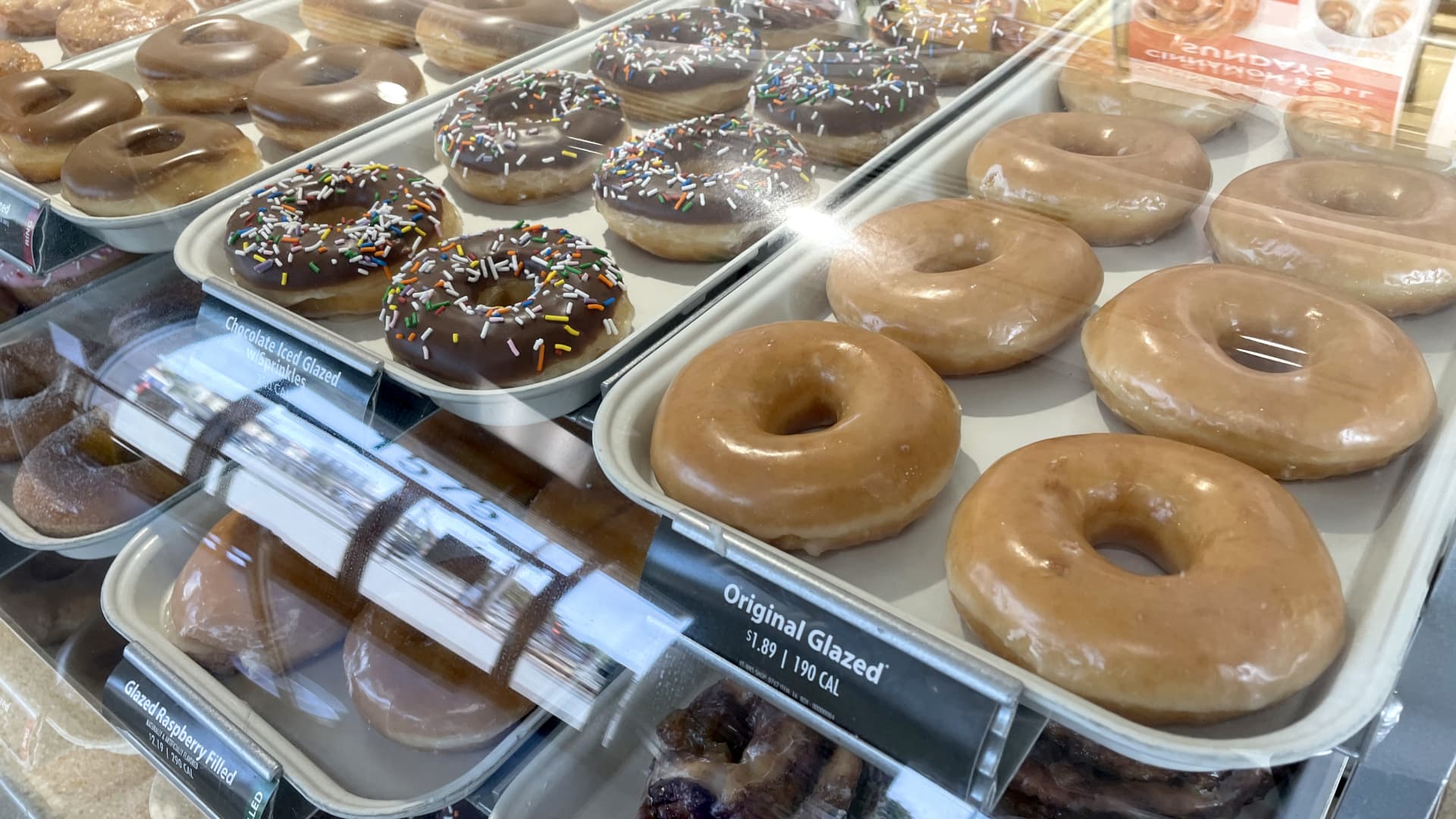Products You May Like
McDonald’s is planning to sell Krispy Kreme doughnuts at its restaurants nationwide by the end of 2026, the chains announced Tuesday.
The rollout will start in the second half of this year, but it will take roughly two and a half years as Krispy Kreme more than doubles its distribution to satisfy the partnership. For the duration of the agreement, McDonald’s will be the exclusive fast-food partner for Krispy Kreme in the U.S.
The doughnut chain uses a “hub and spoke” model that lets it make and distribute its treats efficiently. Production hubs, which are either stores or doughnut factories, send off freshly made doughnuts every day to retail locations such as grocery stores and gas stations.
The partnership with McDonald’s is a major opportunity for Krispy Kreme to expand its reach. It delivers its doughnuts to 6,800 third-party stores, as of Dec. 31. McDonald’s has roughly 13,500 restaurants in the U.S. and plans to open 900 new locations nationwide by 2027.
“We think we can service about 6,000 restaurants with our existing infrastructure, mostly doughnut shops, which have excess capacity,” Krispy Kreme CEO Josh Charlesworth told CNBC.
Krispy Kreme has also been expanding its capacity so it can deliver fresh doughnuts to the roughly 7,500 McDonald’s restaurants that it can’t currently reach.
While McDonald’s is the primary reason the company is expanding its distribution so quickly, Charlesworth said Krispy Kreme will also be using the opportunity to land in grocery and convenience stores that prefer national suppliers.
“That means that the overall efficiency and productivity of our distribution network will significantly improve over time, not just because of all those local deliveries,” he said.
Additionally, Krispy Kreme’s doughnut shops typically make more of the sweet treat than the chain can sell. The extra demand from McDonald’s and other new customers means its production lines can churn out higher volume with few additional costs.
“Overall, therefore, it makes our system more profitable to grow the deliver fresh daily channel, and McDonald’s is an accelerator of that,” Charlesworth said.
The two chains’ relationship started about a year and a half ago, when McDonald’s began selling Krispy Kreme doughnuts at nine restaurants as a test. Months later, the pilot had expanded to roughly 160 restaurants across Louisville and Lexington, Kentucky. Those initial restaurants will keep selling the doughnuts during the national rollout.
Demand from McDonald’s customers during the tests exceeded both chains’ expectations, according to Charlesworth.
For McDonald’s, the addition of Krispy Kreme doughnuts helps bolster its bakery and breakfast offerings. The burger chain has been leaning into coffee, a common drink pairing for doughnuts, but trimming other bakery items such as cinnamon rolls from its menu.
McDonald’s customers will be able to order the original glazed, chocolate iced with sprinkles and chocolate iced cream-filled doughnuts, either individually or in packs of six. The restaurants will sell the doughnuts all day.
In the long term, Krispy Kreme now expects it can reach more than 100,000 points of access for its doughnuts globally, up from its prior outlook of 75,000 locations. The chain’s doughnuts can currently be found in more than 14,100 stores across 39 countries.
Shares of Krispy Kreme have fallen 20% over the past year, dragging its market value down to $2.11 billion. As hype over weight loss drugs such as Novo Nordisk’s Ozempic has soared, investors have worried about whether the treatments will cut into Krispy Kreme’s future sales.
Similar concerns have weighed on McDonald’s, although its stock has risen 2% in the past year as consumers trade down to its cheap food and drinks. The company has a market value of $201 billion.
